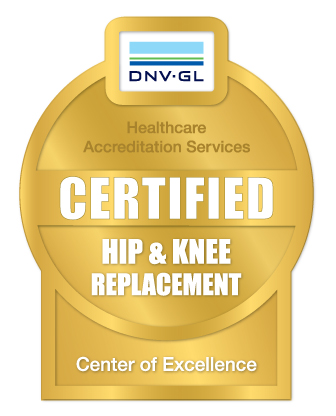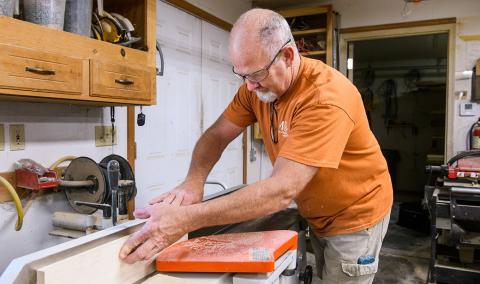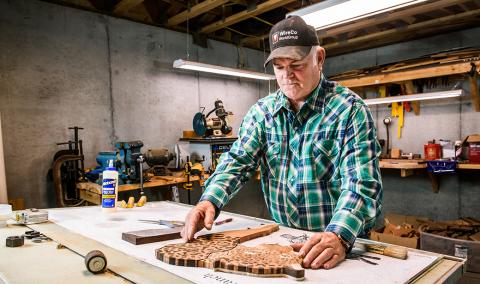If you have hip pain that isn’t responding to other therapies, hip replacement surgery may help relieve your symptoms and improve your quality of life.
A hip replacement (hip arthroplasty) can help reduce hip pain associated with hip arthritis and other conditions. During the procedure, an orthopaedic surgeon replaces your hip joint with a prosthetic (artificial) implant.
Orthopaedic surgeons at MU Health Care perform hip replacements using minimally invasive techniques whenever possible. New surgical advances and protocols also allow many patients to go home the same day as their hip replacement.
We also offer robotic-assisted hip replacements and specialize in complex arthroplasties, including revision surgeries for failed implants.
Types of Hip Replacement Available at MU Health Care
Most hip arthroplasties are total hip replacements, meaning your surgeon replaces both the ball and socket of your hip joint. Less often, a partial hip replacement (hemiarthroplasty) is done to replace just the ball, or top of your femur.
We perform hip replacements using the latest surgical techniques and technology, so they are less invasive than traditional arthroplasties. When performed by experienced surgeons like those at MU Health Care, the following procedures have similar outcomes for patients.
Anterior Approach Hip Replacement
This hip replacement surgery is performed from the front of your hip.
Posterior Approach Hip Replacement
Through an incision on your side, surgeons perform this hip replacement surgery from the back of your hip.
Robotic-Assisted Hip Replacement
Your surgeon can use either the anterior and posterior approach with or without an advanced robotic system. At MU Health Care, our team uses the Mako SmartRobotics and VELYS Robotic-Assisted Solution systems for robotic-assisted hip replacements.
Before a robotic-assisted hip replacement, your surgeon will create a digital model of your joint using 3D computed tomography (CT). During surgery, the system uses the image to help our team make precise cuts and align your joint.
Outpatient Hip Replacement
If you undergo any of these less invasive approaches to hip replacement, you may be able to go home the same day as surgery. Otherwise, you can likely return home a day or two after surgery.
Hip Revision
A revision hip replacement can help if you’ve had a joint replacement that has been damaged or has failed. Hip revisions are also an option if you’ve had an infection in your joint. During a hip revision, a surgeon can repair or replace your artificial joint.
Second Opinions for Hip Replacement
If a hip replacement has been recommended for you, our team can review your situation and offer a second opinion. Other, less invasive treatments like hip preservation at MU Health Care may be an option.
Am I a Candidate for Hip Replacement?
Hip replacements can treat pain resulting from a range of hip conditions. You may be a candidate if you have hip pain from:
- Hip arthritis (osteoarthritis)
- Rheumatoid arthritis and other autoimmune conditions
- Broken hip from a fall or other orthopaedic trauma
- Bone necrosis (osteonecrosis), when bone tissue dies at the top of the femur (ball of hip socket)
- Infection in the hip joint
- Hip dysplasia and deformities
- Failed hip implants or periprosthetic fractures (fractures around implants)
If you’re not sure you are a candidate, take our online joint replacement surgery assessment to learn more. However, a hip replacement may not be your only option. Many younger patients find relief from minimally invasive hip preservation treatments available at MU Health Care.
Our team can perform a thorough medical evaluation and recommend a personalized treatment plan based on your needs and goals.
Our Approach to Hip Replacement
Outcomes from hip replacement have improved in recent years, thanks to advanced surgical techniques, new implants and better rehabilitation protocols.
Even if you have other health conditions, you may still be a candidate for hip replacement. We routinely replace hips in patients with heart, liver or blood issues, and even organ transplants.
Before surgery, we will work with your primary care physician and other specialists to coordinate any tests needed. By partnering with your cardiologist, rheumatologist, endocrinologist and other experts as needed, we aim to get you cleared for surgery more quickly.




























